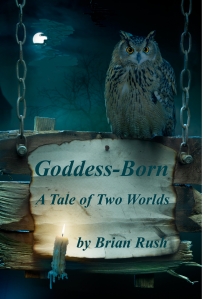 Race issues surface in America periodically, and they are doing so once more at this time, as they did in the 1860s and again in the 1960s. It happens when something changes, so that a situation that could once be ignored no longer can be, and when something that could not be changed suddenly can. The industrial revolution reduced the economic value of slavery and allowed the moral arguments for its abolition — which had always been cogent — to prevail. The prosperity of the 1960s made the glaring fact that non-whites didn’t share in it impossible to gloss over.
Race issues surface in America periodically, and they are doing so once more at this time, as they did in the 1860s and again in the 1960s. It happens when something changes, so that a situation that could once be ignored no longer can be, and when something that could not be changed suddenly can. The industrial revolution reduced the economic value of slavery and allowed the moral arguments for its abolition — which had always been cogent — to prevail. The prosperity of the 1960s made the glaring fact that non-whites didn’t share in it impossible to gloss over.
Today, we are seeing a similar result from the widespread availability of cameras and instant communication through the Internet. Racially-based police violence, once something that could be ignored, is being caught on video and made evident to anyone not determined to shut his eyes to it. Awareness of racial discrepancies in law enforcement leads logically and naturally to awareness of similar discrepancy in the courts, and to the fact that it still occurs in employment.
But I’m not going to talk much about the Black Lives Matter [Too] movement (addition of the last word is for clarity as to what the slogan actually means), or about the problem of racial discrimination in our society that still exists more than 50 years after the passage of the Civil Rights Act. The correct position on these matters — “correct” here meaning “in accord with observable fact” — is quite obvious and does not need restating by me. Yes, racially-based police brutality is a problem, over and above the general problem of police misbehavior. Yes, deep-seated racial attitudes affect employment and economic success or failure in life, and the only thing that the Civil Rights Act effectively prevents is overt, blatant, and deliberate racial discrimination; a lot of the discrimination isn’t even conscious on the part of those committing it.
All of that’s a no-brainer except for those who have no brains, or whose brains are short-circuited by self-serving delusions. And others are saying it. No one needs me to parrot them.
What I’m going to do instead is to address another side of the matter: the roots of racism, what it actually is, and what can be done about it. In the process, I’m also going to address a couple of irrational and poorly-conceived ideas running about among progressives on the matter of race. To some, that will make me sound like a right-winger, which is too bad. But these things need to be said, and there’s no better time to say them than now.
The Roots of Racism
The roots of racism lie in the concept of race itself. This is the idea that people can be meaningfully categorized based on superficial physical characteristics. There is, of course, no scientific basis for the idea of race at all; that people of European ancestry have, for example, lighter skin or straighter hair than people of African ancestry is true only as an average. There are so-called “white” people whose skin is darker than some so-called “black” people at the margins of that characteristic for both population groups. There is no basis for defining such categories.
Where the idea of race becomes not just unscientific but actually pernicious is when it leads people to identify with a particular race, and feel a kinship with others similarly categorized, while seeing those outside that group as “others.” From this starting point, all the evils of racism, historical and current, flow. Why did cash-crop planters in America see Africans as a source of forced labor? Because they were “others,” and not “us.” Why do white employers still give preferential treatment to white job applicants? Because they identify themselves as white people, and so have an impulse to prefer other white people as employees.
Ultimately, the solution to racism is to eliminate race itself as a concept and an identifier. Until we manage that, all solutions will be no better than stopgaps.
Now to deal with a couple of poorly-thought-out concepts circulating on the left, before going into possible long-range solutions.
“White Privilege”
To begin the process of offending those who basically agree with me: there is no such thing as “white privilege.” That’s an unfortunate and misleading way to refer to the fact that white people have it easier in this culture than non-whites. That’s a fact, all right, but it doesn’t mean whites are privileged (barring a few of them, all rich ones), it means non-whites are denied their rights. Courteous and professional treatment by police, a fair trial and equal protection under the law, and a merit-based consideration for employment without racial discrimination, these are not privileges. They are rights. Calling this state of affairs “white privilege” logically implies that the problem is that white people are treated too well. No. The problem is that non-whites are treated too poorly. Everyone should be treated the way white people are treated. That’s not privileged. It’s normal, and it’s fair. And it’s perfectly feasible to treat everyone that way.
One could argue that “white privilege” and “non-white denial of rights” mean the same thing insofar as both imply that one artificial category of people is treated better than all other categories, but the connotations are different, and those of “white privilege” aren’t useful. It’s no better for white people to feel guilty about being white, than for them to feel self-satisfied about it. What they need to do is to stop seeing themselves as “white people” at all — and to stop seeing others as either white or not. And for others to stop seeing white people’s whiteness as well, or their own non-whiteness.
“Only Whites Can Be Racist”
There’s a pernicious idea floating around among progressive circles that racism is a synonym for systematic racially-based oppression, which it’s not; the latter is a result of the former, not a synonym for it. One consequence of tying racism to race-based oppression is a tendency to give a free pass to racist attitudes on the part of non-whites, who are not in a position to impose systematic racial oppression on others (at least not culture-wide).
That such attitudes exist is painfully obvious. (If you need hard polling evidence, try this article from the Pew Research Institute.) Racism among non-whites isn’t just directed against whites, either — one could perhaps dismiss or excuse that on the basis of reaction to white racism (not that that has any more than a superficial validity) — but also against other groups of non-whites. It shares space in the mental pathology sphere with antisemitism and other types of religious bigotry, and with the gender bias that is ubiquitous in all societies, and with homophobia.
Again: the root of racism lies in the categorizing of people into racial groups at all, and in the identification of oneself as a member of one such group and of others as belonging to another. Racism is an us versus them attitude based on race. It is by no means unique to people who see themselves as white, and it is an evil to be fought wherever it appears, and whomever it is directed against.
Racism that feeds into the power structure and results in systematic discrimination obviously does more harm than similar attitudes that do not, but they are the same attitudes nonetheless. Moreover, racial balances are in transition. White people have been a majority in the United States since before the country’s founding, but the size of that majority is declining, and whites will no longer be a majority in a few more decades. A history of being the victims of oppression does not prevent a group from becoming oppressors if the power balance should shift — a glance at the way Israel treats the Palestinians should suffice to dispel that illusion.
Racism In Decline
Racism is actually in decline in this country, despite the headlines and the new attention being given to racial problems. It’s in decline over generations as well as over time. Pew has a good study on Millennial attitudes on race, showing that members of this generation are dramatically more likely to have friends of a different race and to approve of interracial dating and marriage than older people.
Why this should be is an open question, but my theory is that it stems from the cultural and political changes of the 1960s, the last time that racial issues received concentrated focus, as they are again today. This period of turmoil resulted in legal changes and in a steep drop in the cultural acceptance of overt racism. While the difference this made in the attitudes of people alive at the time may have been limited, the impact on generations that grew up after the transition and had no memory of the way things were before has been profound.
Supporting this idea is the fact that Millennial attitudes on race do not represent a sharp shift from those of Generation X. Millennials are marginally less racist than Xers, but the difference between Xers and Boomers is dramatic, while that between Boomers and the Silent generation is, like that between Millennials and Xers, more marginal. Among non-Hispanic whites, the percentage surveyed who supported interracial marriage was 88% for those 18-29 years of age, 75% (13 points of difference) for those 30-49, and 52% (23 points of difference) for those 50-64.
Generation X is the first generation to grow up mostly after 1964, although older Xers do have memories from the time of turmoil itself, which was far from completed in that year.
What this should tell us is that legal and cultural changes, by altering the way we do business and the way we talk about race issues, produce dramatic changes in the mindset of generations that grow up under the new paradigm compared to those who grew up under the old. (We can expect a similar decline in homophobia in new generations that will grow up around married gay couples and see homosexuality as no big deal.)
Racism, in short, is declining. It’s by no means gone, but it’s going, and will continue to decline as older people are replaced by younger generations. The current focus on racial issues is likely to accelerate that process.
Long-Term Solution
There’s no way to get rid of racism instantly. Over the long term, the only way to do that is to get rid of race. While this is not going to happen quickly in society as a whole, each of us can make it happen for ourselves as individuals.
We need to recognize the lack of any scientific basis for the idea of race. We need, based on that awareness, to stop thinking of ourselves in racial terms. That is the first step towards not thinking of others in racial terms. If you think you’re a white person, or a black person, or an Asian, or a Hispanic — you’re mistaken (insofar as those are racial and not cultural identifiers).
You are not a white person. You are not a black person. You are not a racial Asian. There is no such thing as any of these. There is such a thing as a Hispanic culture, but no such thing as a Hispanic race, and the same applies to Asia — culture is real, race is not. (As for so-called white and black people, how many of either category in the United States identify with any of the cultures of Europe or Africa, aside from actual immigrants? I was even recently told by an African-American that a mutual acquaintance from Nigeria was “not black” — a recognition that the man’s culture was foreign, and he was not part of the African-American subculture with its roots in slavery, and so a tacit recognition that race is not real, while culture is.)
Is it easy to do this? I suspect it’s a lot easier for younger people, who may tend to forget about race most of the time anyway. It’s harder, but by no means impossible, for those of us more advanced in years. It’s a mental discipline and the development of mental habits, like any other habit of thought. It takes practice and it takes time and effort, but it can be done, and to suggest that it can’t is to give up on solving the problem of race. Because that change in mind-set, that elimination of race altogether from the way we think, is the only thing that will work in the long run.
In the really long run, what is most likely to happen as a result of global mixing is that future generations will all be a blend of so-called “racial” characteristics. Our descendants will visibly reflect the biological reality that we are all one species, and race is a fiction.
In the meantime, we can and should learn to recognize this reality in our minds, and see past the superficial differences of race that are in fact no more meaningful than the difference between blond and brunette.







